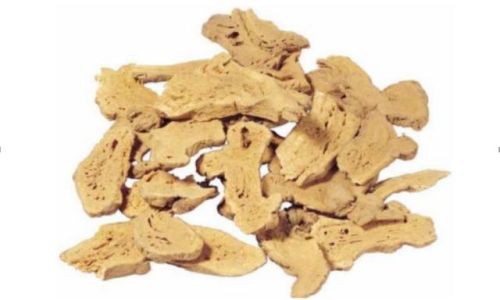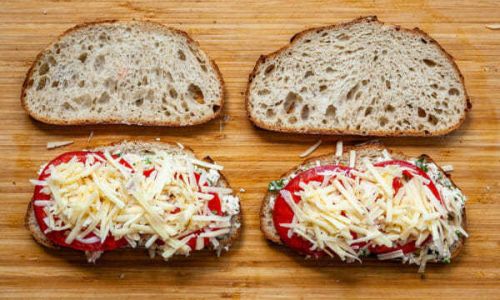Traditional and Modern Drying Techniques for Atractylodes Macrocephala: Preserving Medicinal Efficacy Through Optimal Processing**
Atractylodes macrocephala, commonly known as白术 (Báizhú) in traditional Chinese medicine (TCM), is a perennial herb revered for its therapeutic properties, including its ability to tonify the spleen, eliminate dampness, and enhance digestive health. The efficacy of this medicinal plant hinges on meticulous post-harvest processing, with drying being a critical step to prevent spoilage, stabilize bioactive compounds, and ensure long-term storage. This article explores the evolution of drying methods for Atractylodes macrocephala, from age-old traditional practices to cutting-edge modern technologies, examining how each approach influences the herb’s quality, chemical composition, and clinical applications. By understanding the nuances of these techniques, practitioners and processors can optimize outcomes tailored to specific medicinal or commercial demands.
Historical Context of Atractylodes Macrocephala Drying
The cultivation and processing of Atractylodes macrocephala date back over 2,000 years, with historical records in ancient Chinese pharmacopeias like the Shennong Bencaojing emphasizing the importance of proper drying. Early farmers and herbalists relied on natural environmental conditions to cure the herb, recognizing that improper drying could lead to mold growth, insect infestation, or degradation of volatile oils. These traditional methods, often passed down through generations, formed the foundation of TCM’s quality control standards. Even today, many regions in China, Japan, and Korea adhere to these time-tested practices, viewing them as integral to preserving the herb’s “authenticity” and therapeutic potency.
Traditional Sun-Drying: A Time-Honored Approach
Sun-drying remains the most ubiquitous traditional method for processing Atractylodes macrocephala. This technique involves harvesting the roots during autumn, when the plant’s energy is concentrated in its rhizomes, followed by careful cleaning to remove soil and debris. The roots are then sliced into thin segments or left whole, depending on regional preferences, and spread out on bamboo mats or wooden trays under direct sunlight.
Key Steps in Sun-Drying

- Preparation: Freshly harvested roots are washed gently to avoid damaging the skin, which could expose inner tissues to microbes.
- Slicing: Roots are cut into 3–5 mm thick pieces to accelerate drying without compromising structural integrity.
- Exposure: Slices are arranged in a single layer on drying racks, turned periodically to ensure even exposure to sunlight and airflow.
- Monitoring: Drying continues until the moisture content drops below 12%, typically requiring 7–14 days, depending on climate.
Advantages and Limitations
Sun-drying is cost-effective and environmentally friendly, requiring minimal infrastructure. However, its efficacy is heavily weather-dependent; prolonged rainy seasons or high humidity can delay processing, risking spoilage. Additionally, uneven drying may lead to case hardening, where outer layers dry too quickly, trapping moisture inside and promoting microbial growth.
Cultural Significance
Beyond practicality, sun-drying is imbued with cultural symbolism. Farmers often perform this task during autumn harvest festivals, believing that exposure to natural sunlight imbues the herb with “yang” energy, enhancing its medicinal properties. This ritualistic aspect underscores the holistic worldview of TCM, where ecological harmony and human intervention coexist.
Modern Drying Technologies: Enhancing Efficiency and Consistency
Advancements in food science and engineering have introduced innovative drying techniques that mitigate the uncertainties of traditional methods. These modern approaches prioritize speed, precision, and scalability, catering to industrial-scale production while attempting to retain bioactive compounds.
Oven Drying
Controlled oven drying involves exposing Atractylodes macrocephala to heated air at temperatures ranging from 40°C to 60°C. This method accelerates moisture removal, reducing processing time to 24–48 hours. Key considerations include:
- Temperature Regulation: Excessive heat (above 60°C) may degrade volatile oils like atractylon and atractylodin, which contribute to the herb’s anti-inflammatory and digestive effects.
- Airflow Management: Forced convection systems ensure uniform drying, minimizing the risk of mold.
Freeze-Drying (Lyophilization)
A high-end technique, freeze-drying involves freezing the herb at -40°C and sublimating ice under vacuum conditions. This method preserves delicate compounds exceptionally well but is prohibitively expensive for large-scale use.
Microwave-Assisted Drying
Microwave energy generates heat internally, evaporating moisture rapidly. While efficient, uneven energy distribution can cause localized overheating, necessitating strict power and time controls.
Solar-Hybrid Dryers
Combining solar collectors with dehumidifiers, these systems harness renewable energy while maintaining stable temperatures. They offer a middle ground between tradition and modernity, suitable for regions with abundant sunlight.
Factor Influencing Drying Quality
Regardless of the method, several variables determine the final product’s quality:

- Initial Moisture Content: Fresh roots with higher water activity require more aggressive drying.
- Slicing Thickness: Thinner slices dry faster but may lose more volatile oils.
- Storage Conditions: Properly dried herb must be stored in airtight containers away from light and humidity to prevent rehydration.
Scientific Validation of Drying Methods
Recent studies have employed high-performance liquid chromatography (HPLC) and gas chromatography-mass spectrometry (GC-MS) to analyze how drying methods affect Atractylodes macrocephala’s chemical profile. Key findings include:
- Sun-Dried vs. Oven-Dried: Sun-dried samples retain higher concentrations of atractylodin and polysaccharides, attributed to slower, gentler drying. Oven-dried specimens, however, show elevated levels of certain flavonoids, possibly due to heat-induced enzymatic reactions.
- Freeze-Dried Superiority: This method preserves the broadest spectrum of bioactives, including terpenes and sesquiterpenes, making it ideal for pharmaceutical applications.
- Microwave Drawbacks: Rapid drying may reduce essential oil content by up to 30% compared to traditional methods.
These insights highlight the need for method selection based on intended use—traditional sun-drying for holistic TCM preparations versus modern techniques for standardized extracts.
Challenges in Modernizing Drying Practices
While technology offers undeniable benefits, several hurdles persist:
- Cost-Benefit Ratio: Advanced dryers like freeze-dryers remain inaccessible to small-scale farmers.
- Energy Consumption: Industrial ovens and microwave systems contribute to carbon footprints, conflicting with TCM’s eco-conscious ethos.
- Quality Standardization: Variability in equipment calibration across factories leads to inconsistent product quality.
Innovative Solutions
Researchers are exploring hybrid systems, such as solar-assisted heat pumps, which reduce energy costs by 50–70% while maintaining quality. Additionally, smart sensors monitor moisture levels in real-time, automating drying cycles to prevent overprocessing.
Future Directions: Toward Sustainable Precision
The future of Atractylodes macrocephala drying lies in balancing tradition with technological innovation. Emerging trends include:
- Nanotechnology: Coating roots with edible nanofilms to reduce drying time while preserving volatiles.
- AI-Driven Protocols: Machine learning algorithms optimize temperature and humidity profiles based on real-time data.
- Circular Economy Models: Reusing waste heat from dryers for nearby agricultural operations.
Conclusion
The drying of Atractylodes macrocephala embodies the intersection of heritage and progress. While sun-drying remains a cornerstone of cultural identity, modern technologies offer unparalleled control over quality and scalability. The choice of method ultimately depends on context: traditional approaches suit artisanal TCM pharmacies, whereas industrial settings benefit from hybrid or advanced systems. As global demand for herbal medicines rises, integrating sustainable, precision-driven drying practices will be pivotal in ensuring the availability of high-quality Atractylodes macrocephala for generations to come. By respecting the wisdom of the past and embracing the tools of the future, the medicinal legacy of this revered herb can thrive in an evolving world.






0 comments